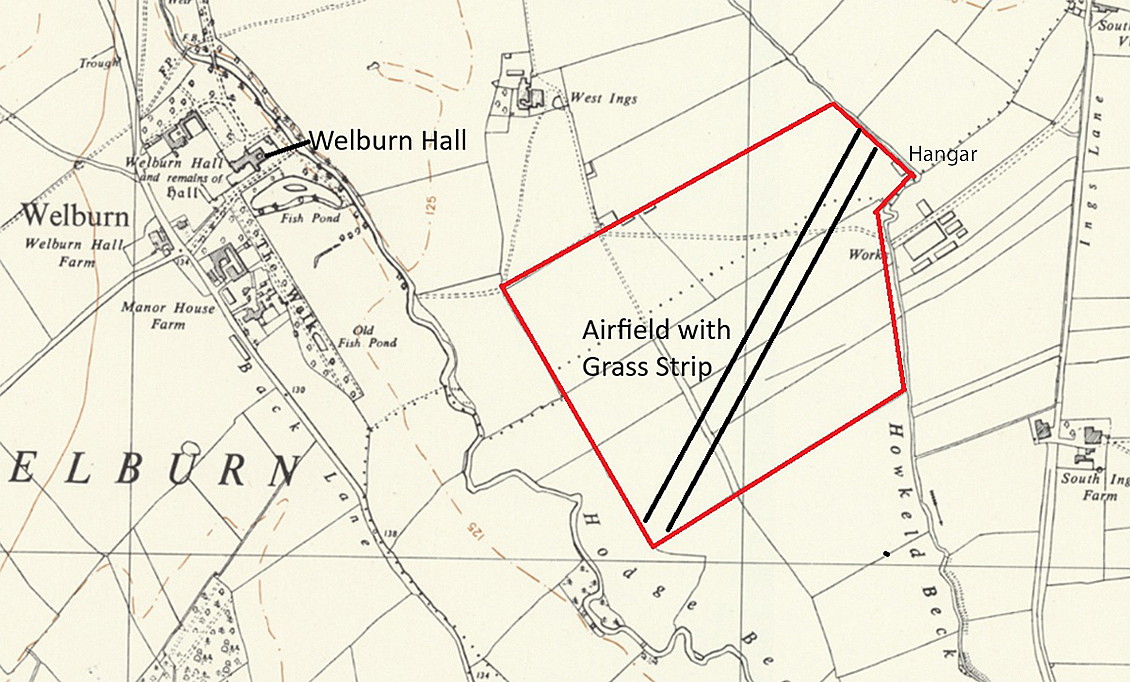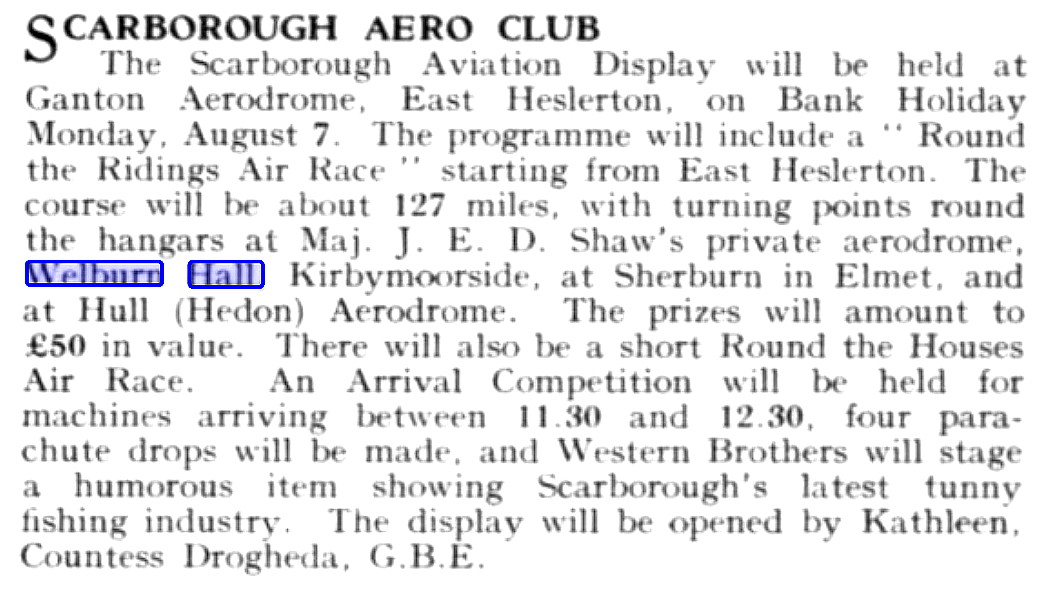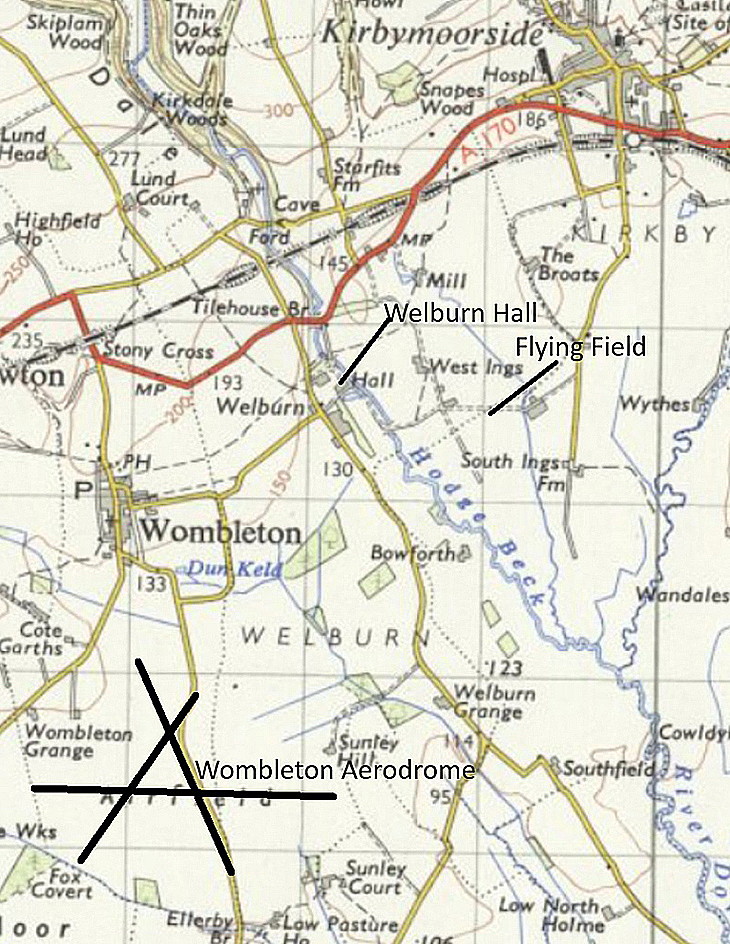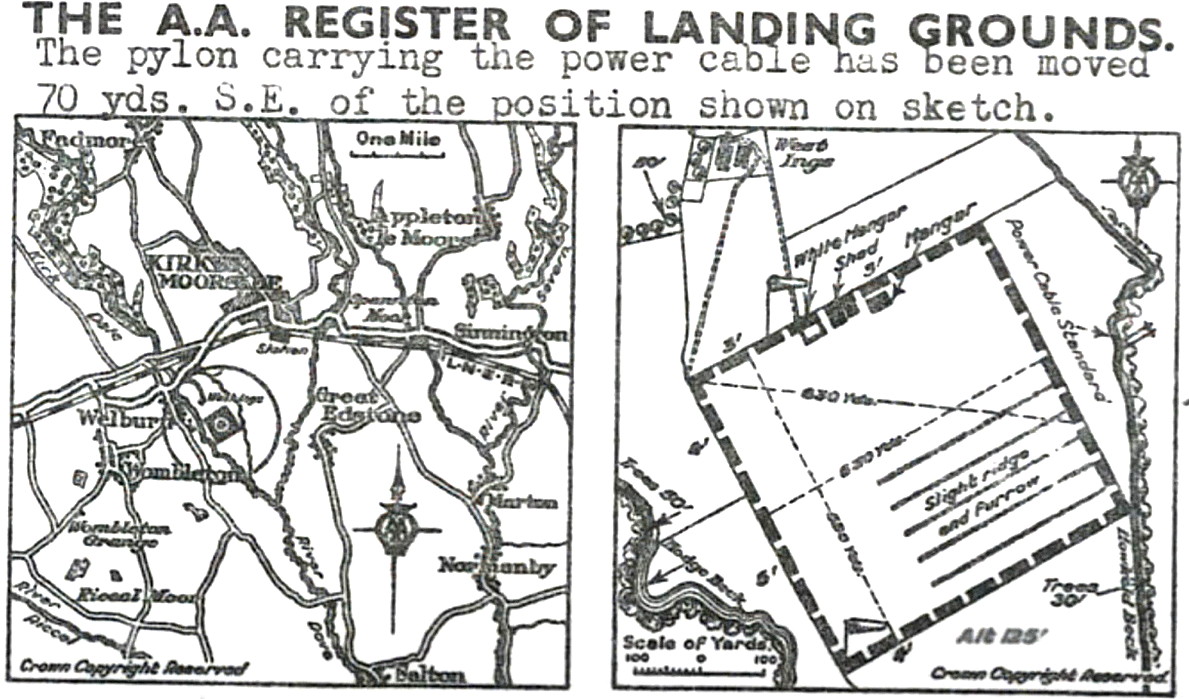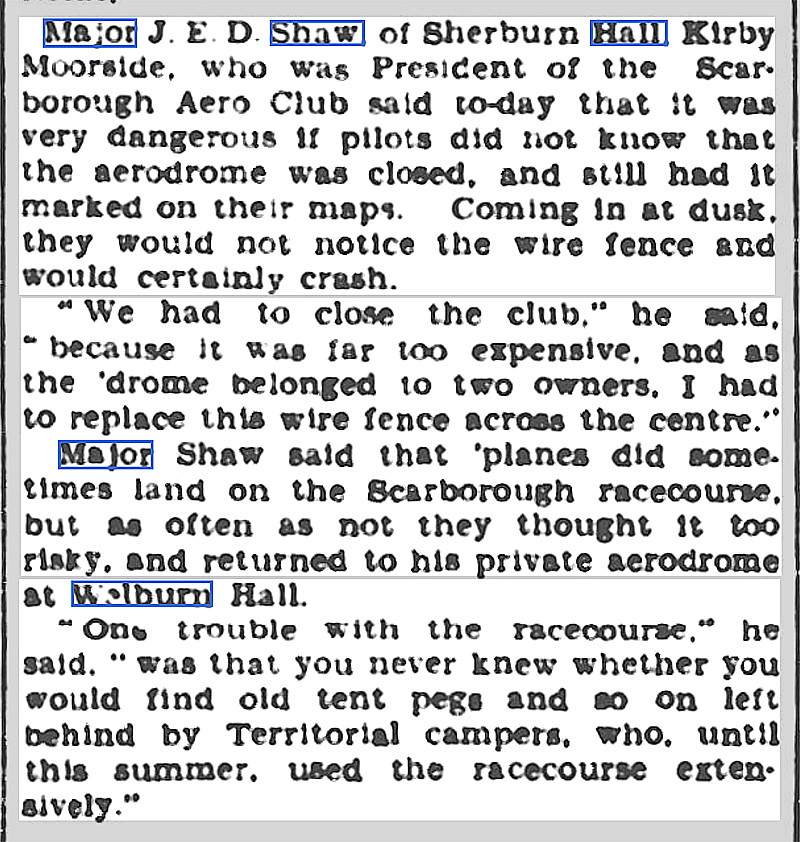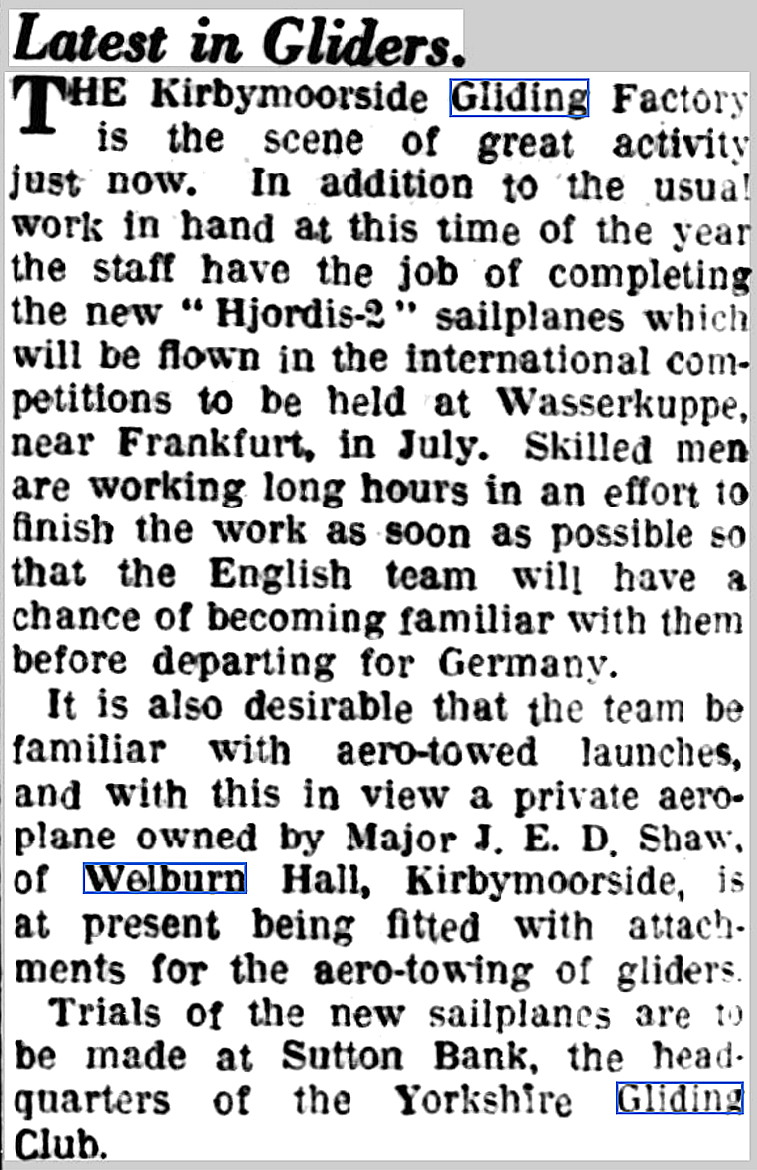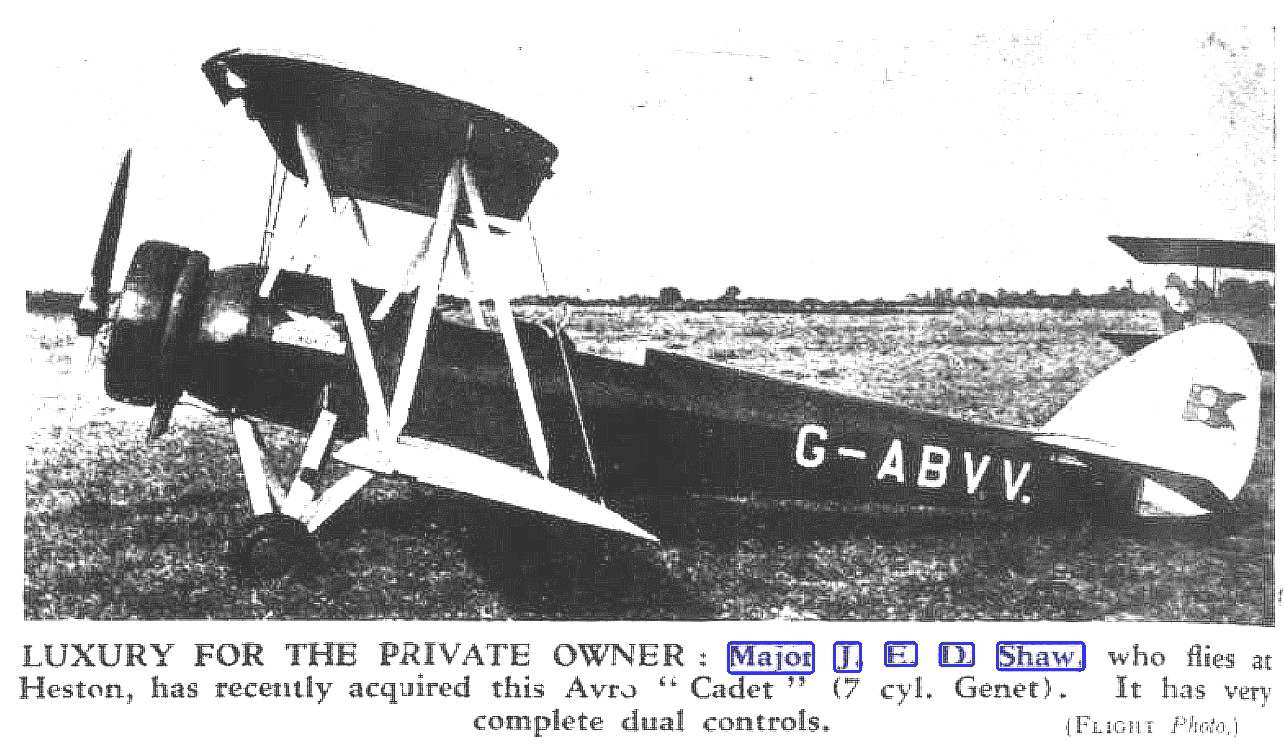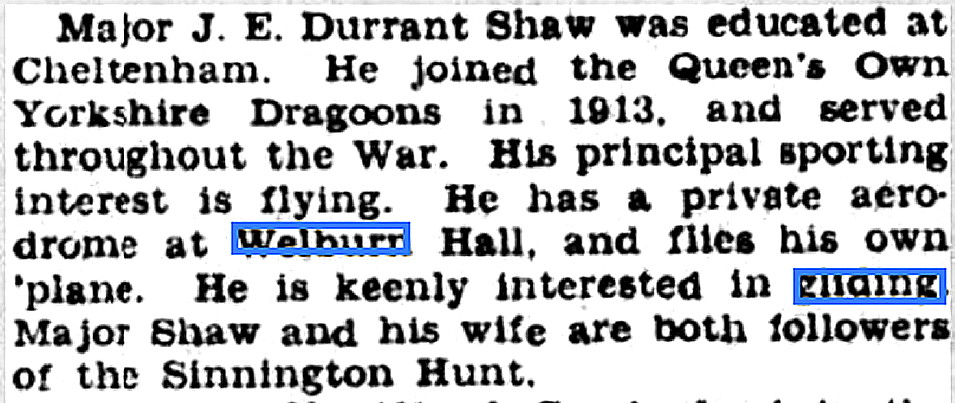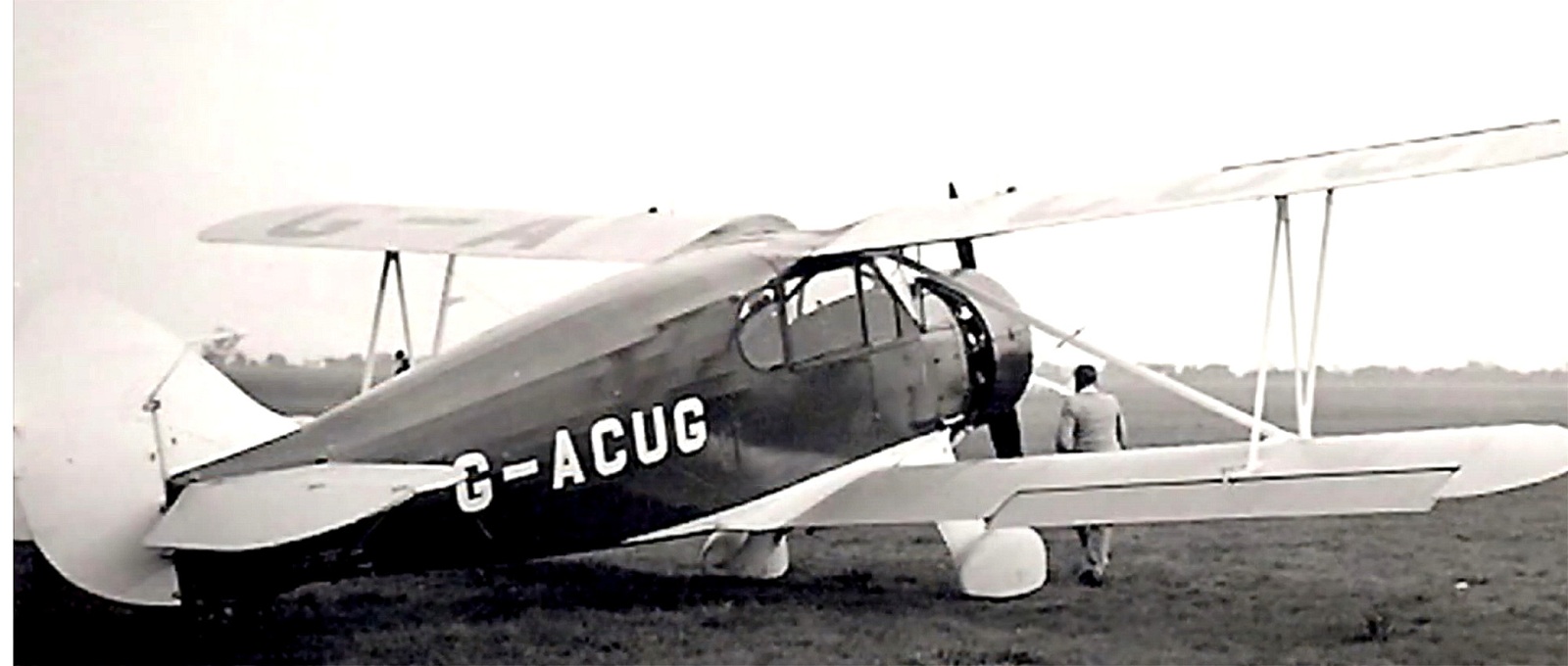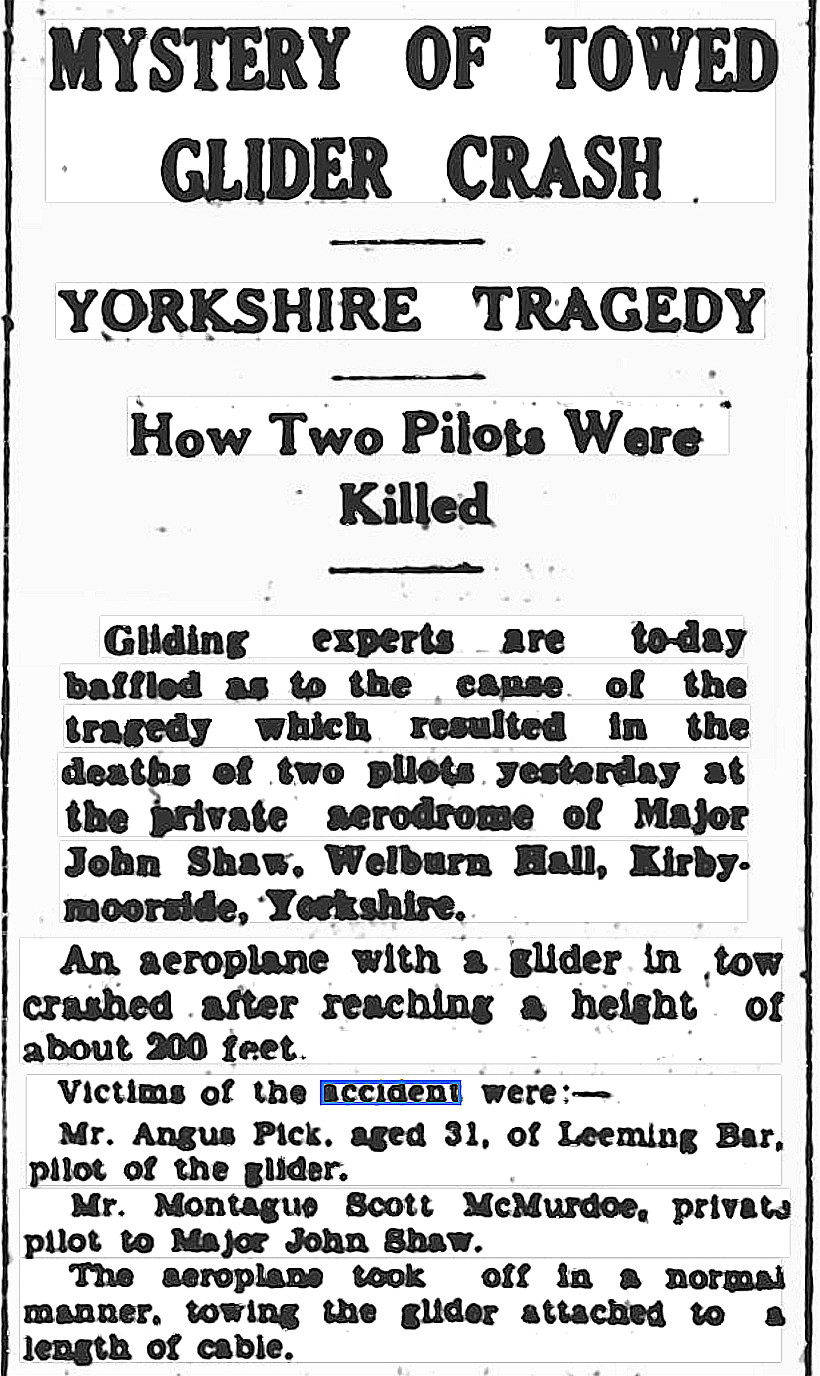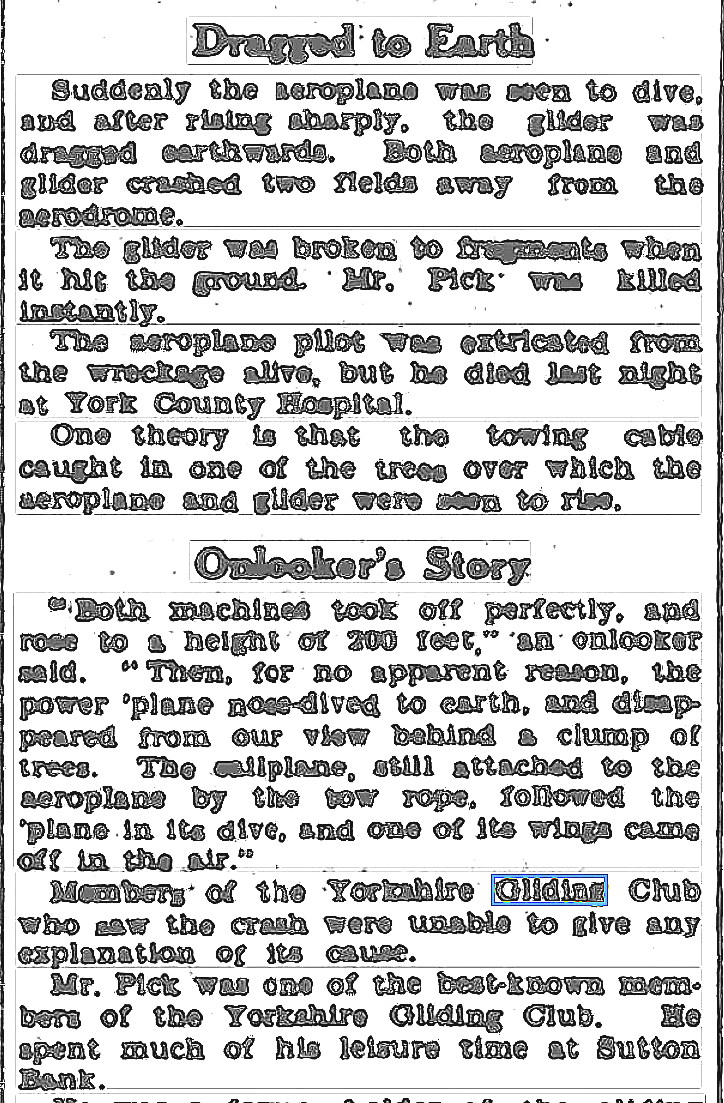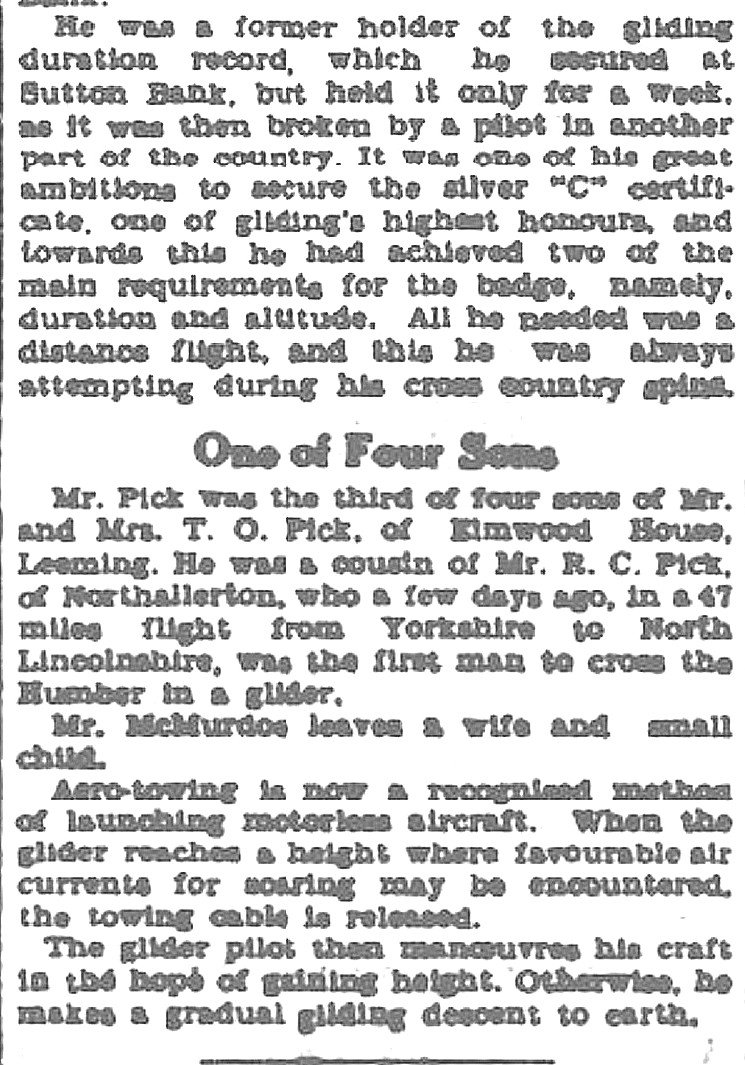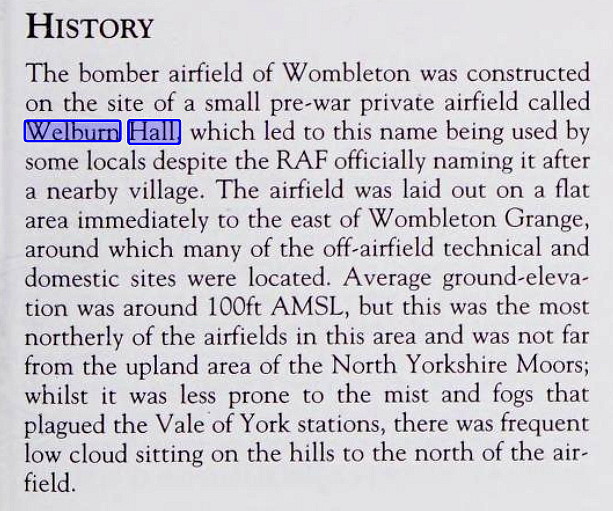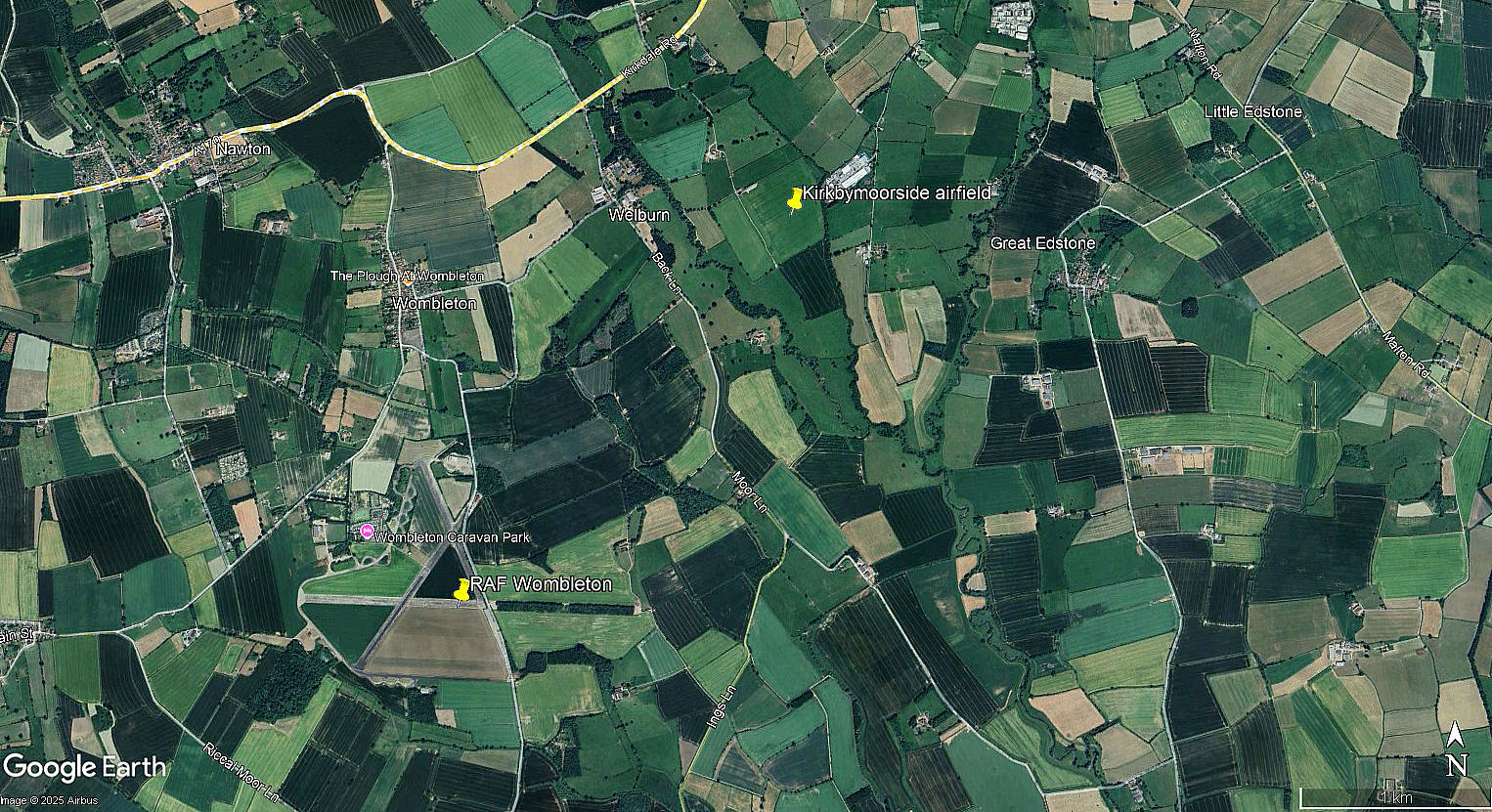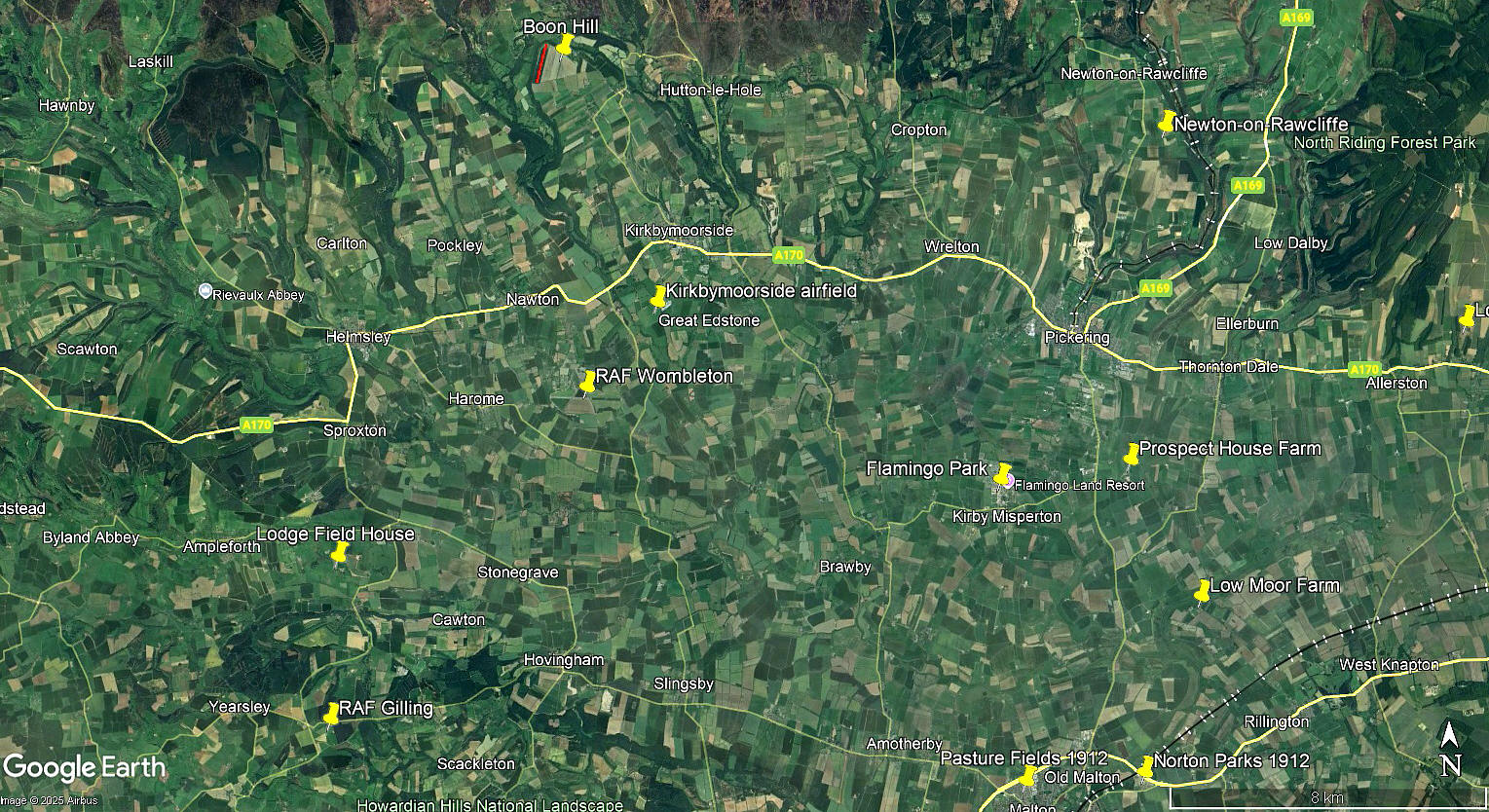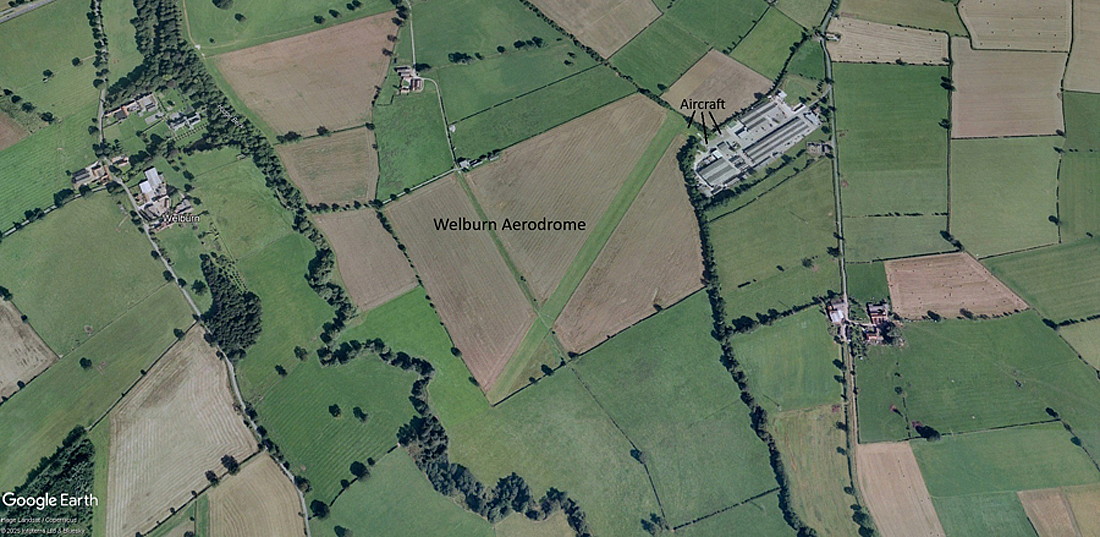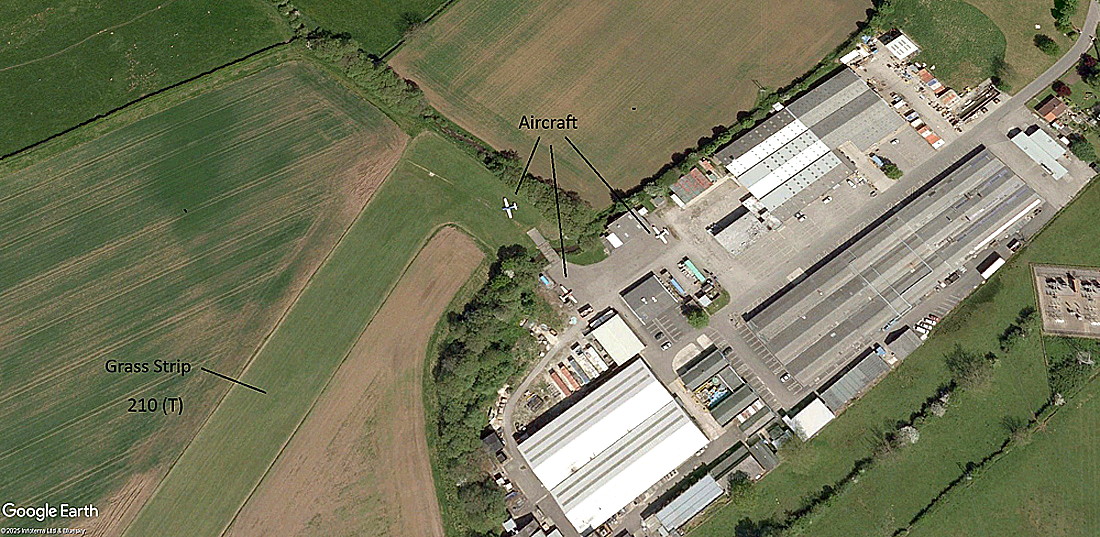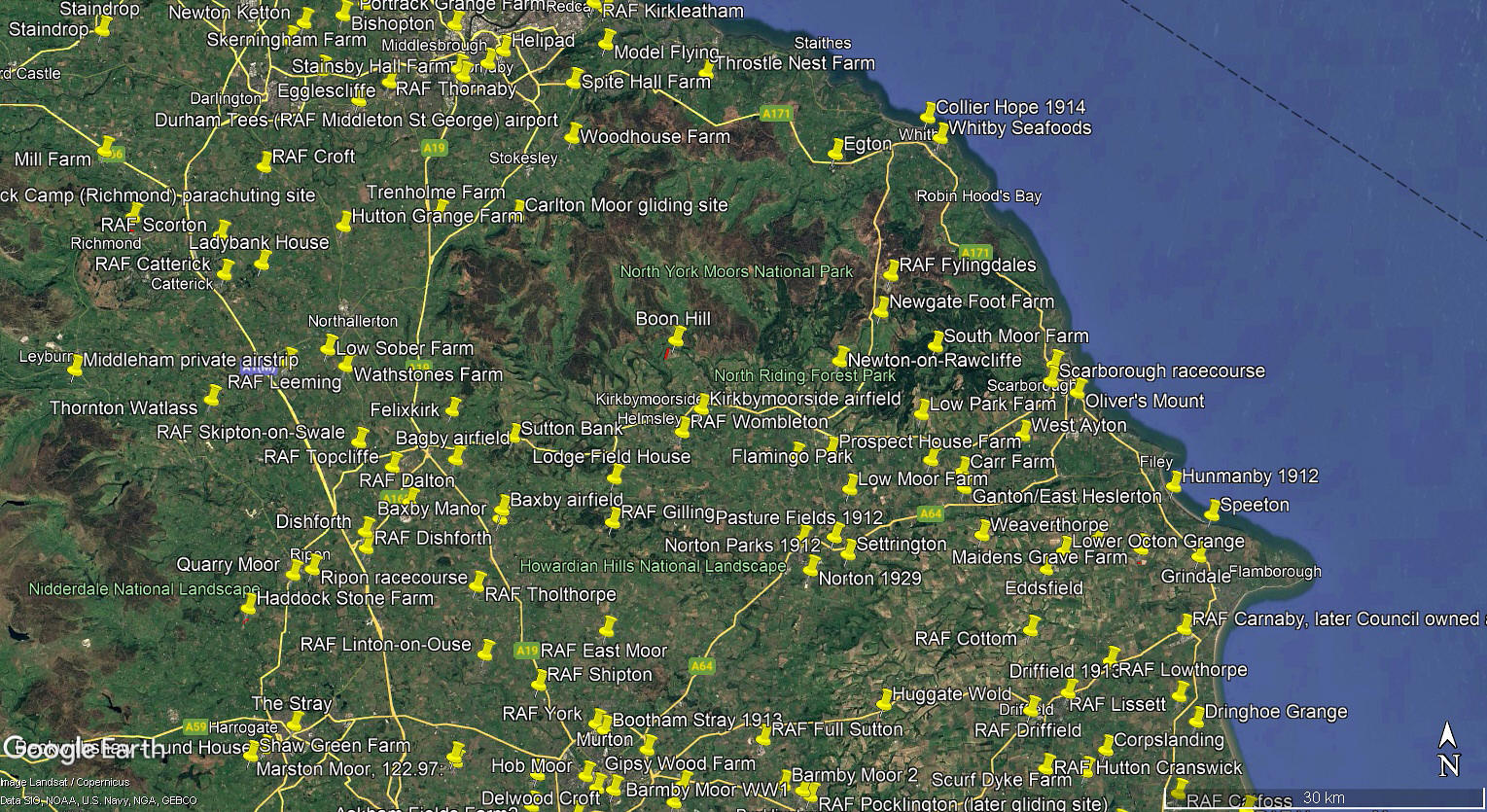Welburn Hall
WELBURN HALL: Private aerodrome
IMPORTANT NOTE: This location has been known by three seperate names. WELLBURN HALL prior to WW2, WELBURN aerodrome before and after WW2 and eventually KIRKBYMOORSIDE. All having gliding connotations with the Slingsby company. And, having seperate listings for more info.
Operated by: Major J E P Shaw
Location: Just E of Welburn Hall and about 1nm S of Kirkbymoorside town centre
Period of operation: With Major Shaw 1933 (at least) until 1939. Then, with Slingsby, just after WW2 until around 2013
A MICHAEL T HOLDER GALLERY
Sorting out this situation all started when Mr Graham Frost, another great friend of this 'Guide', contacted me with information about a double fatality involving a glider towing accident at BOWFORTH FARM, Welburn Hall in May 1939. Between the Avro Cadet G-ABVV towing the Slingsby Gull glider BGA349. I had no listing for this location, and to be honest, could find nothing out about the site being used. Frankly - obviously did not know where to look.
So, discombobulated, knickers in a twist etc, sent out an SOS call to Mike Holder - "Help!" Typically, being an ex-RAF navigator, (starting on Vulcans in the 'Cold War', and these days being a whizz on computers, mapping, and searching press archives etc), in next to no time he came up with the following items.
The Short article One was published in Flight magazine on the 3rd August 1933.
In the 1930s the Automobile Association were very 'air minded'. Not least because, in those days, it was seeking a rather elitist membership. They had compiled a list of AA approved aerodromes and Landing Grounds. They also had message boxes spread along major trunk roads where members could land in an adjacent field, and write out a message.
For example, "Running late, see you around four o'clock". AA patrolmen would regularly inspect these boxes, and relay any messages by telephone. The AA had installed a large network of nearly 1,000 phone boxes along major roads for which members had a key. Apart from a telephone these also had basic motoring supplies. AA patrolmen, when not attending to a broken down car, would stand alongside their very smart motorbike and side-car, (containing their tools etc), and salute members having an AA badge on their front bumper. In the 1930s they used two light aircraft for spotting major traffic problems.
The Short article Two was published in the Yorkshire Evening Post on the 14th October 1936. The photo was published in the Leeds Mercury on the 9th June 1939.
The Short article Three was published in the Bradford Observer on the 17th April 1937.
Photo Two, of G-ABVV, was published in Flight magazine on the 24th June 1932. The Short article Four was published in the Yorkshire Post and Leeds Intellligencer on the 10th March 1939.
It now appears that Major Shaw owned two aeroplanes. The Avro 631 Cadet G-ABVV from 05.04.32 until the fatal crash in May 1939. He also had the rare Avro 641 Commodore, (G-ACUG) from 14.06.34 until 15.02.41 when it was impressed as DJ710. Only six of this five-seat cabin biplane were built, this one crashed at WHITE WALTHAM just a few months after being impressed.
This article was published in the Yorkshire Evening Post on the 31st May 1930.
SO, WHERE WAS IT?
Excerpt One is from Wombleton, Military Airfields of Britain, Northern England, by Ken Delve. Excerpt Two is from Yorkshire airfields in the Second World War by Patrick Otter.
As you can now easily see, it wasn't just me who had had problems with understanding where the WELBURN HALL aerodrome actually was located. Both of these, no doubt well-meaning authors, clearly had the same problem! This is by far not an isolated example. Over the years it has cropped up time and time again that attempting to differentiate between a specific location turning out to being known by two or more different names, and, for example, two seperate locations, (but co-located), ostensibly having the same name; can sometimes be a devil of a job to resolve.....if at all. Thankfully, given time, and I have been working on the 'Guide' for over a quarter of a century, (this being in 2025), quite often very kind people offer the advice needed.
The local area and area views are from my Google Earth © derived database. I do like to point out that not all of the listings in this 'Guide', by far, are not pinned on the database. Good job too, because in some areas it would be just a mass of yellow! I find it somewhat surprising that the unique aviation heritage we have on our green and septic, (even sceptic?), Kingdom - still in 2025 just about United - is something that is not celebrated. I may well be seriously mistaken, but am fairly certain it does not get mentioned in history lessons taught at schools.
Indeed, as an example, my infant school was across the road from the very first fully manned international airport in the UK after WW1 - CRICKLEWOOD - operated by the Handley Page company. Having had both my parents in the RAF, (my father being a flight engineer), and two uncles who, as pilots, both went on to be employed in civil airlines, I have had something of an interest in aviation for as long as I can remember. But, was this ever mentioned? If it was, not in my class.
We'd love to hear from you, so please scroll down to leave a comment!
Leave a comment ...
Copyright (c) UK Airfield Guide















